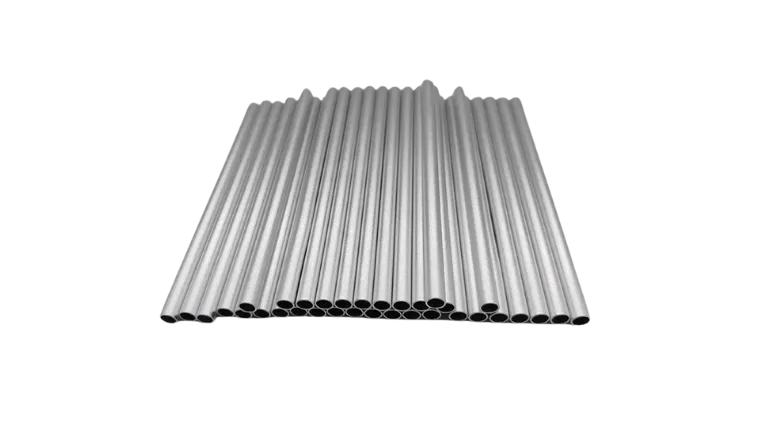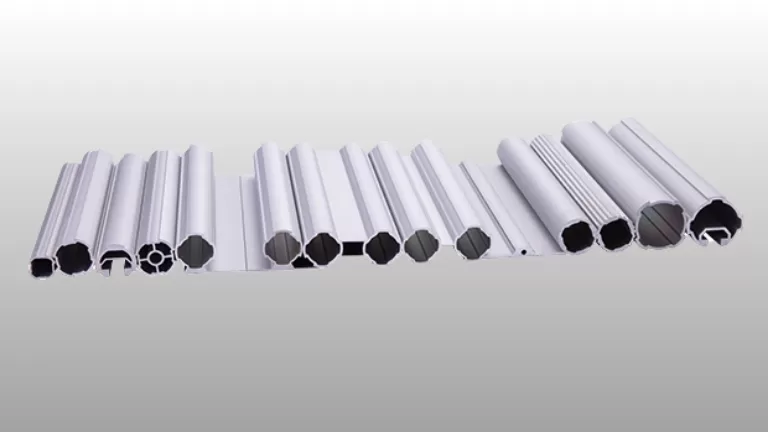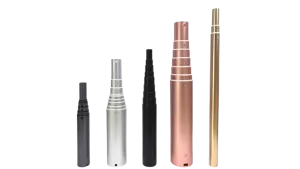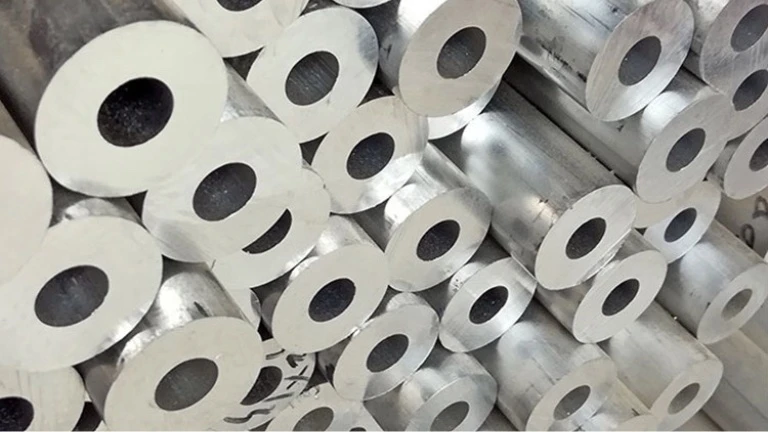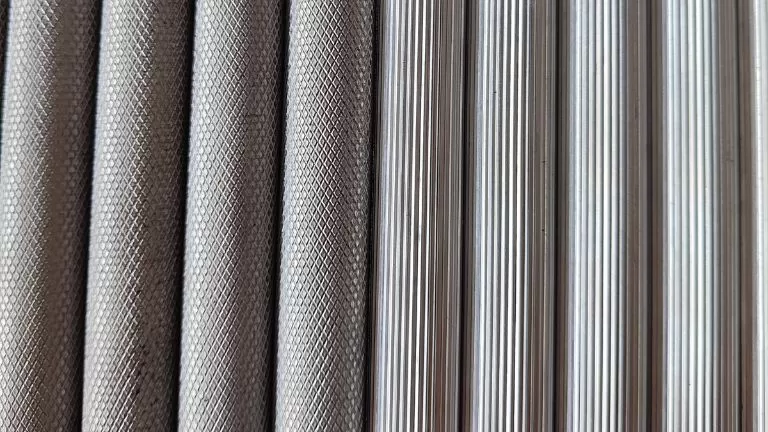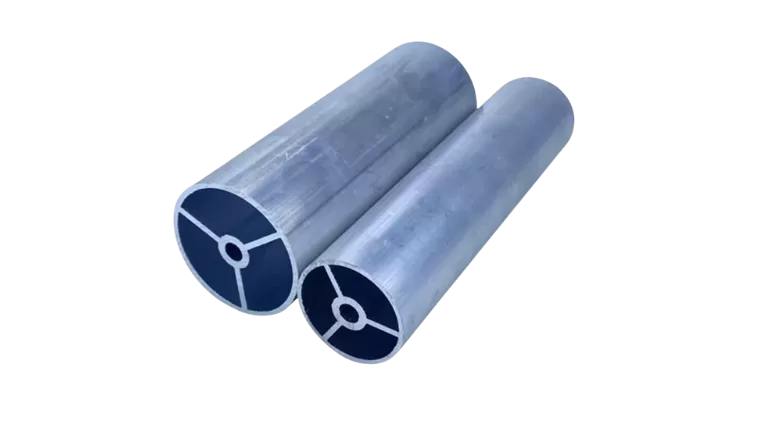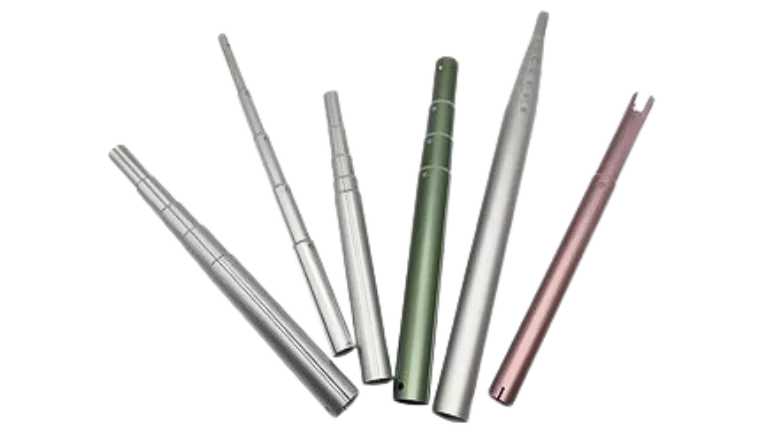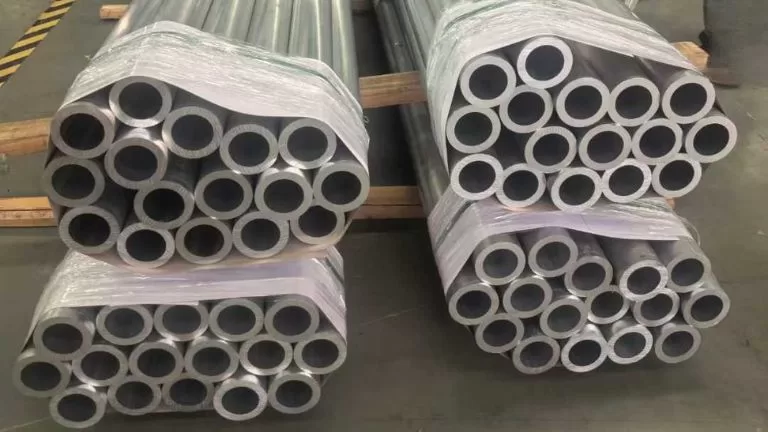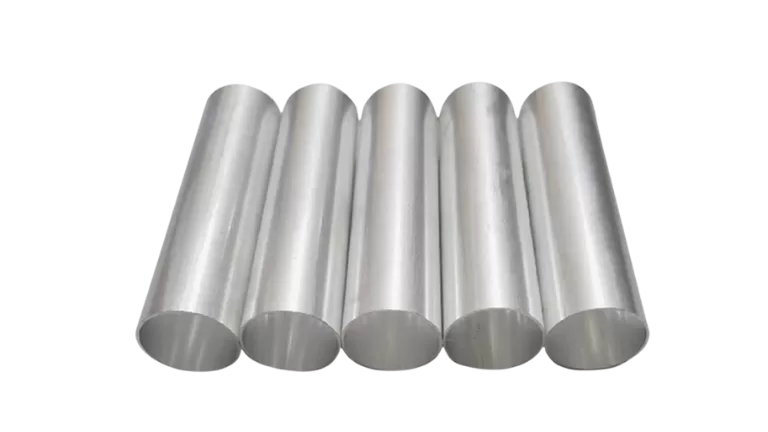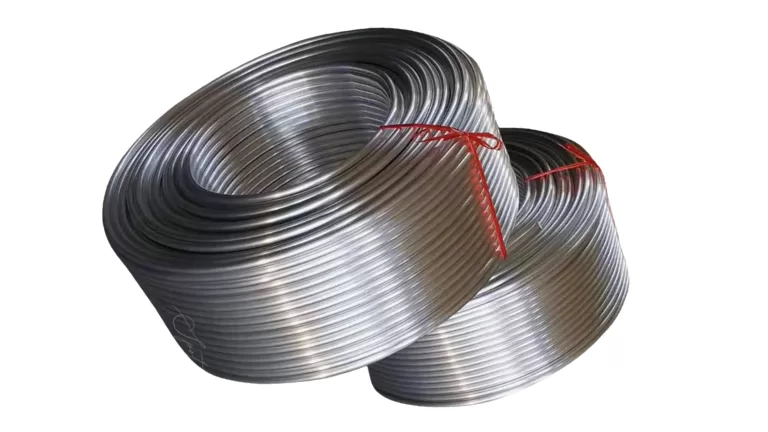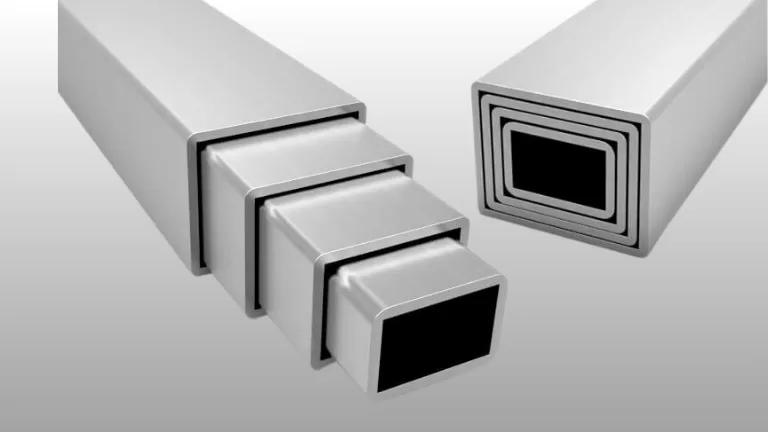Custom Large Diameter Aluminum Tube | Pile Extrusions
Large diameter aluminum tubes and pile extrusions are essential components in various industries, offering a lightweight yet robust solution for structural support, piling systems, and heavy-duty applications. With excellent mechanical properties, corrosion resistance, and design flexibility, these extrusions excel in challenging environments, making them ideal for use in construction, marine, transportation, and energy sectors.
At HTS-ALU, our 6000-ton extrusion press enables the production of large aluminum sections with high precision. We provide customized solutions in various alloys, sizes, and finishes to meet diverse project needs efficiently and reliably.
Alloys for Large Diameter Aluminum Tubes
When producing large diameter aluminum tubes or pile extrusions, selecting the right alloy is essential. Common choices include 5052 for corrosion resistance, 6061 for strength and weldability, 6063 for anodizing, 7075 for high strength, and 5083 for marine environments. Alloys like 6061-T6 or 5052-H32 can be enhanced through heat treatments for specific requirements.
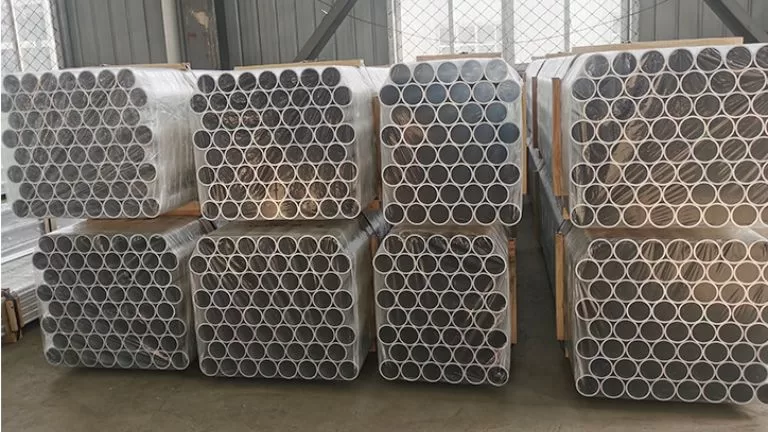
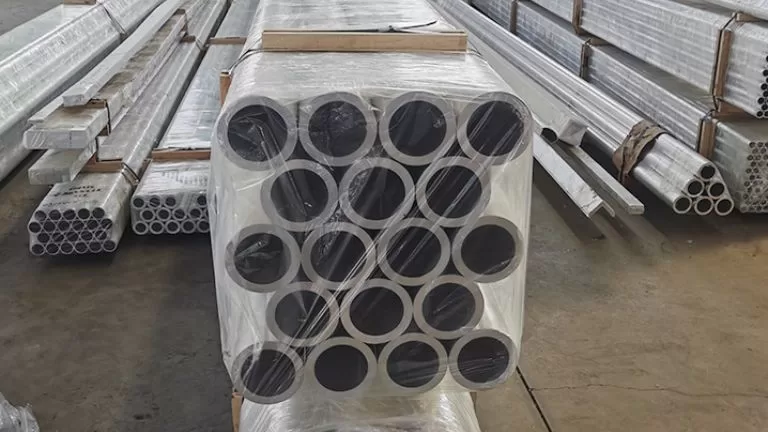
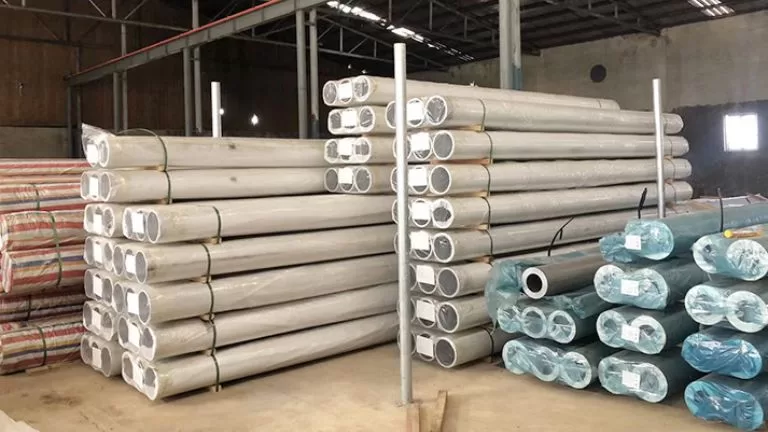
| Alloy | Key Features | Typical Applications |
|---|---|---|
| 5052 | Outstanding corrosion resistance (especially in marine and chemical environments), good toughness | Ship pilings, chemical industry pipelines, offshore platforms |
| 6061 | High strength, moderate corrosion resistance, excellent machinability, and weldability | Structural components, lightweight pile materials, automotive parts |
| 6063 | Smooth surface, suitable for anodizing, with medium strength | Architectural piles for decorative purposes, furniture support tubes |
| 7075 | Ultra-high strength, lower toughness, and average corrosion resistance | High-load components, such as aerospace parts |
| 5083 | High resistance to salt spray and industrial gas corrosion, moderate toughness | Marine protective piles, ship components, offshore wind turbine foundations |
Lager Aluminum Tubing Processing Capabilities
As a leading aluminum extrusion manufacturer based in China, we are committed to providing high-quality aluminum profiles for a wide range of industries. Our capabilities start with custom mold design and manufacturing, ensuring precise extrusion shapes that meet the specific needs of our clients. From raw extrusion to surface finishing and advanced machining, our fully integrated manufacturing processes enable us to deliver aluminum profiles that meet exacting standards and cater to the unique requirements of each project.
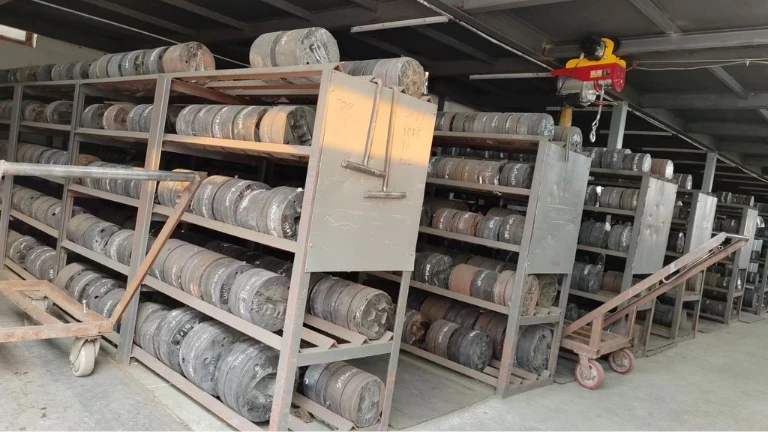
Mold Design and Development
We possess the expertise to design and produce extrusion molds in-house, ensuring precision and efficiency in aluminum profile manufacturing. Our experienced team works closely with clients to develop custom molds based on drawings or samples, ensuring optimal performance for their specific requirements. Typically, the mold production process takes about 7 days, after which we provide samples for client confirmation before beginning full-scale production.

Aluminum Profile Extrusion
Our production facility houses over 40 advanced extrusion lines, featuring cutting-edge equipment such as a powerful 6000-ton extrusion press. This enables the creation of aluminum profiles in various sizes and forms, ranging from standard industrial applications to specialized products like thermal break profiles for high-end doors and windows. The flexibility of our extrusion capability ensures we can cater to a broad spectrum of industries, including construction and precision engineering.
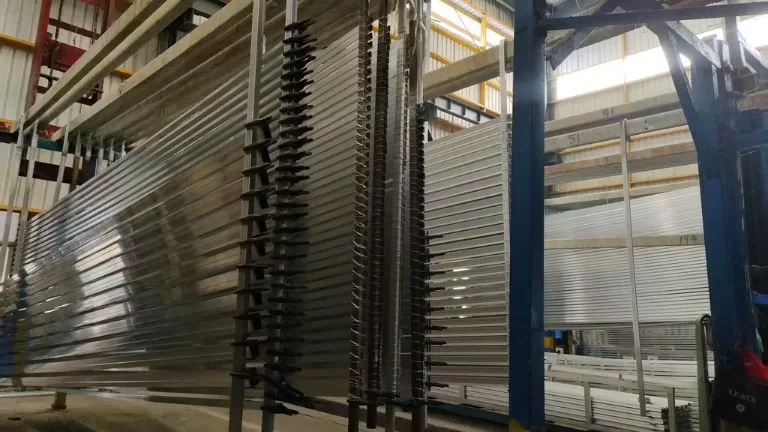
Surface Treatment
With advanced surface treatment capabilities, our facility features 1 anodizing and electrophoretic coating line for enhanced corrosion resistance, 4 powder coating stations (including 2 horizontal and 2 vertical units) for durable finishes, 1 PVDF fluorocarbon spray line for superior weather resistance, 6 wood grain transfer lines for elegant decorative effects, and 2 sandblasting units for optimal surface preparation.
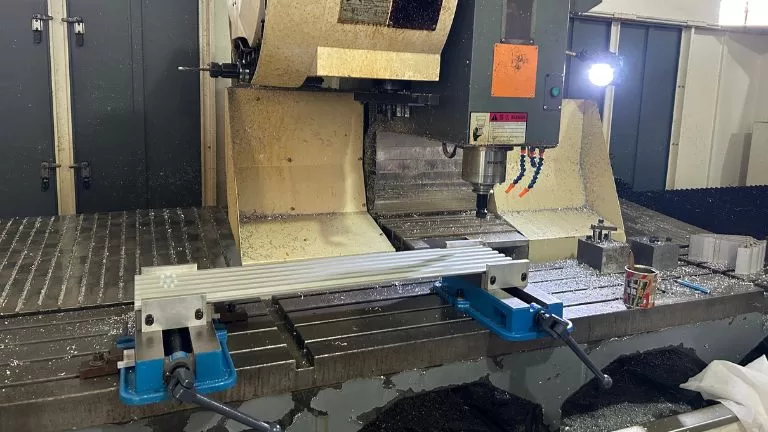
Machining and Fabrication
To provide complete aluminum profile solutions, we offer extensive further processing capabilities. Our services include CNC machining, milling, threading, drilling, precision cutting, punching, welding, assembly, as well as surface marking options such as silk-screen printing and laser engraving for logos or identification. This comprehensive range of fabrication options allows us to deliver ready-to-use profiles tailored to exact project specifications, offering unmatched flexibility, traceability and reliability to our customers.
Custom Large Aluminum Pipe Specifications
| Outer Diameter (OD) | 150mm ~ 1200mm (typical range), extended up to 2000mm via welding or assembly for larger sizes. |
| Wall Thickness (WT) | – Standard: 2mm ~ 50mm <br> – Thick-walled: 10mm ~ 100mm (for high-load applications). |
| Length | – Standard: 6m, 12m <br> – Custom: Extended lengths achievable through segment assembly. |
| Diameter Tolerance | ±0.3mm ~ ±1.0mm (varies with OD). |
| Wall Thickness Tolerance | ±0.1mm ~ ±0.5mm. |
| t/D Ratio | Typical range: 1/30 to 1/50. Custom designs for ultra-thin (<1/50) or ultra-thick (>1/5) walls available. |
Factory Show
Our factory features 40 extrusion lines for efficient aluminum profile production. We offer a full range of surface treatments—including anodizing, electrophoresis, powder coating, sandblasting, and wood grain transfer printing—with advanced equipment. In-house casting, aging, annealing, water cooling, and machining ensure complete control and high-quality results for all products.
Advantages of the Extrusion Process
The extrusion process is highly suitable for manufacturing large diameter aluminum tubes and piles due to its flexibility and efficiency. It allows for customizable dimensions through specialized molds and ensures high production efficiency, making it ideal for medium to large batch production. Additionally, hot extrusion improves mechanical properties by refining the aluminum’s grain structure, resulting in products with excellent strength and ductility. Furthermore, extruded products are compatible with a variety of post-processing techniques, including machining and welding.
Despite its advantages, the extrusion process faces challenges with ultra-large diameters, which may require specialized equipment or supplementary techniques like welding and rolling. Additionally, extreme wall thickness-to-diameter ratios (t/D) can increase demands on mold design and pressure, requiring advanced technologies to ensure precision and quality.
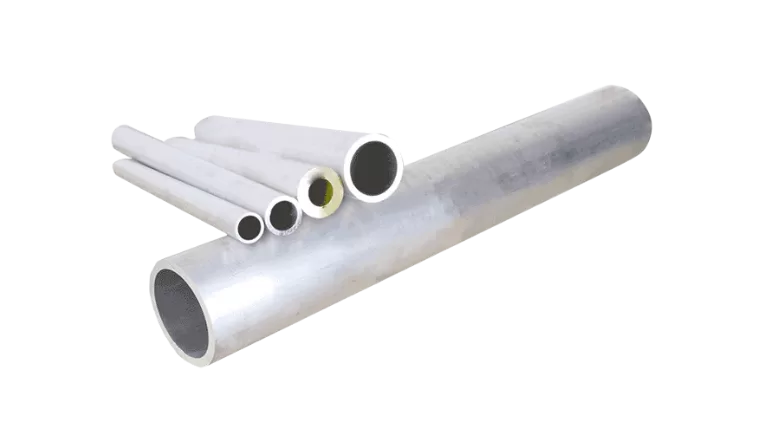
Production Process of Large Aluminum Tubes
The production of large diameter aluminum tubes involves a series of precise and advanced processing steps to achieve the desired specifications, strength, and surface quality. Starting from mold design to final surface treatment, each stage ensures the accuracy and reliability of the final product.
1. Mold Design and Preparation
- Custom molds are designed and manufactured based on drawings or samplesprovided by the customer.
- The mold dictates the dimensions, such as the outer diameter, inner diameter, and wall thickness of the aluminum tube.
2. Extrusion Process
- Billet Heating: Aluminum billets are heated to 400℃ ~ 480℃ to achieve the proper plasticity for extrusion.
- Forming: Under high pressure, the heated billet is forced through the custom mold in an extrusion press, forming a hollow tube or pile.
- Cooling: The extruded product is rapidly cooled using air, water, or a fan to ensure efficient solidification and structural stability.
3. Heat Treatment
- After extrusion, the aluminum tubes undergo heat treatment to enhance their strength, durability, and mechanical properties, ensuring compliance with application-specific requirements.
4. Surface Treatment
- To improve corrosion resistance and achieve the desired aesthetic appearance, treatments such as anodizing, electrophoretic coating, or powder spraying are performed.
- These processes also protect the product against environmental factors, extending its service life.
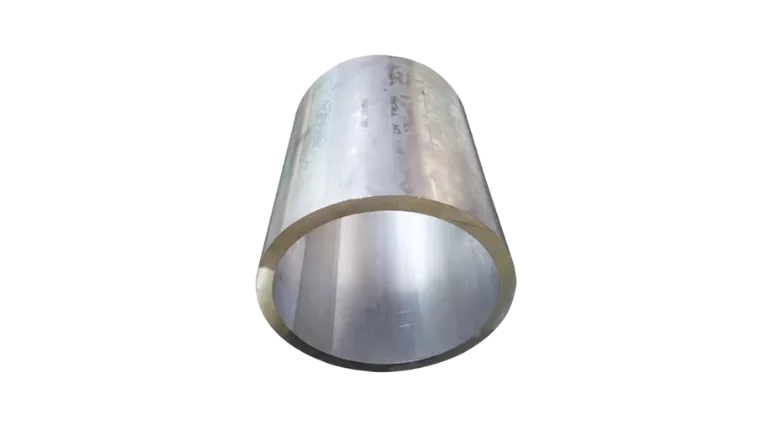
Comparison Aluminum Tubes with other Material
| Attribute | Aluminum Alloy Extruded Large Diameter Tubes | Steel Tubes | Composite Material Tubes |
|---|---|---|---|
| Weight | Light (density only 2.7 g/cm³) | Heavy | Light |
| Durability | Highly corrosion-resistant, low maintenance cost | Prone to rust, requires coating protection | Customizable, but can face delamination or aging |
| Strength | Moderate to high strength, better strength-to-weight ratio than steel | High strength | Varies depending on composite materials |
| Workability | Easy to cut, bend, and drill | Moderate workability | High difficulty in processing |
| Cost | Moderate | Low initial cost, but high in-service cost due to maintenance | High |
Large Aluminum Tubing Solution
HTS-ALU is a professional aluminum profile manufacturer in China with over 20 years of experience in the industry.
– We provide custom extrusion and tooling development tailored to a wide variety of aluminum tubing needs. In addition, we maintain a large inventory of pre-made dies to meet urgent production requirements.
– Our factory features 40 advanced extrusion lines, including a maximum 6000-ton press, allowing us to efficiently handle both small-batch and large-scale production orders.
– We offer an extensive range of in-house surface finishing and precision machining services, delivering end-to-end solutions customized for diverse applications.
– Mold development typically takes 7 to 10 days, while standard production for quantities up to 26 tons is completed within 15 to 20 days, ensuring fast turnaround and reliable delivery.
RFQ of Extruded Aluminum Profile
The heat treatment of aluminum extrusions determines their mechanical properties, strength, and suitability for specific applications. Among the various heat treatment methods, T5, T6, and T66 are the most commonly used. Here’s an in-depth look:
| Heat Treatment State | Cooling Method | Strength | Key Features and Benefits | Applications |
|---|---|---|---|---|
| T5 | Air cooling (fan) | Moderate | Adequate strength, good dimensional stability, used for architectural purposes. | Windows, doors, curtain walls, building structures. |
| T6 | Water quenching (fast) | High | Higher strength and hardness, ideal for industrial and structural uses. | Automotive, aerospace, machinery, transport parts. |
| T66 | Water quenching (fast) | Very high | Optimized mechanical properties for higher strength and performance demands. | Automotive, rail transportation, high-end machinery. |
Other Heat Treatment States
- T4: Solution heat-treated and naturally aged. Used in applications requiring intermediate strength and enhanced formability.
- T7: Overaged for better stress-corrosion resistance, often used for aerospace and marine purposes.
- O (Annealed): Very soft condition suitable for extensive forming or bending requirements.
- F (As-Fabricated): No heat treatment applied, used in non-critical applications with low strength requirements.
Aluminum extrusions undergo various surface treatments to enhance aesthetics, corrosion resistance, and functionality. Here are the common surface treatment methods used in the industry:
Main Surface Treatment Methods
Anodizing (Oxidation)
- Process: A controlled electrochemical process that forms a protective oxide layer on the aluminum surface.
- Features:
- Provides a durable, corrosion-resistant, and environmentally friendly finish.
- Produces a metallic finish with a variety of natural tones (e.g., silver, black, bronze).
- Improves surface hardness and protects against scratching.
- Applications: Architectural frames, decorative profiles, heat sinks.
Electrophoresis Coating (E-Coating)
- Process: After anodizing, the aluminum is coated with paint using an electrochemical process.
- Features:
- Enhances corrosion resistance and offers a smooth, glossy finish.
- Provides more color and texture variation compared to anodizing alone.
- Applications: Furniture profiles, indoor architectural components.
Powder Coating
- Process: Electrostatic application of powder paint, followed by curing under high temperature to form a solid coating.
- Features:
- Wide variety of colors and textures.
- Excellent weather resistance and corrosion protection.
- Cost-effective and highly versatile.
- Applications: Outdoor frames, fences, railings, general industrial use.
PVDF Coating (Polyvinylidene Fluoride)
- Process: A specialized fluoropolymer coating is applied in multiple layers, commonly over a pretreated surface.
- Features:
- Exceptional weather resistance and UV stability.
- Highly durable, resistant to fading, chalking, and chemical damage.
- Ideal for long-term outdoor use.
- Applications: Curtain walls, high-performance architectural facades.
Wood Grain Transfer Printing
- Process: A heat-transfer printing process that applies a wood grain effect onto a pre-coated aluminum surface.
- Features:
- Mimics the appearance of wood while retaining aluminum’s durability.
- Lightweight and weather-resistant alternative to natural wood.
- Applications: Furniture, decorative coverings, outdoor panels.
Film Lamination
- Process: Adhesive application of a protective or decorative film onto the aluminum surface.
- Features:
- Provides a glossy, textured, or patterned finish.
- Often used for applications requiring specific textures like marble or leather effects.
- Applications: Interior decor, windows.
Pre-Treatment Processes
Prior to surface treatment, the aluminum surface can be pre-processed for specific textures or finishes:
Brushing/Polishing
- Removes surface imperfections and creates a smooth, reflective finish.
- Often used for decorative purposes.
Sanding/Grinding
- Produces a matte or satin finish by applying abrasives.
Shot Blasting/Sandblasting
- Sprays abrasives at high velocity to create a textured surface, often used before anodizing for a uniform appearance.
Stretching and Tension Leveling
- Straightens the aluminum profile and improves shape accuracy after extrusion.
Cost and Durability Comparison Table
| Treatment Method | Process Cost | Surface Durability | Weather Resistance | Applications |
|---|---|---|---|---|
| Anodizing (Oxidation) | Medium | Very Durable | High | Architectural frames, industrial parts. |
| Electrophoresis (E-Coating) | Medium-High | Durable | Medium | Furniture, indoor parts, decorative uses. |
| Powder Coating | Medium | Highly Durable | High | Outdoor frames, industrial fixtures. |
| PVDF Coating | High | Extremely Durable | Excellent | Curtain walls, high-end exteriors. |
| Wood Grain Printing | Medium | Moderate (topcoat dependent) | Medium | Decorative panels, furniture. |
| Film Lamination | Low-Medium | Moderate | Low | Indoor decorations, windows. |
| Brushing/Sandblasting (Pre-Treatment) | Low | Not Applicable (Preparation only) | N/A | Preparation for further treatment. |
. Anodizing (Oxidation)
- Common Colors:
Natural silver
Black
Champagne
Light bronze
Dark bronze
Gold
2. Electrophoresis Coating (E-Coating)
- Common Colors:
Black
Champagne
Light bronze
Dark bronze
Custom metallic colors
3. Powder Coating
- Colors:
Can match any color based on the RAL color chart.
Offers textures like matte, gloss, satin, and custom finishes.
4. PVDF Coating (Polyvinylidene Fluoride)
- Colors:
Also customizable using the RAL color chart.
High-end finishes with matte or glossy effects.
5. Wood Grain Transfer Printing
- Colors and Patterns:
Mimics various wood types (e.g., oak, walnut, teak, mahogany).
Custom patterns available based on provided samples.
6. Film Lamination
- Colors and Patterns:
Includes textures like marble, leather, and solid colors.
Custom finishes and patterns based on provided samples.
Pre-Treatment Options (Impact on Final Color)
- Brushing/Polishing: Produces smooth or reflective metallic surfaces.
- Sandblasting: Adds a rough, matte texture before the final surface treatment.
We provide a wide range of machining services for aluminum extrusions to meet specific requirements. These include cutting off/section removal, slotting, drilling holes, tapping threads, bending, and localized stamping to create deformations. For example, we can trim extruded profiles to custom lengths, mill precise grooves, create threaded holes for fasteners, bend profiles into specific shapes, or apply localized stamping to achieve custom forms or deformation.
In addition to these processes, we also offer TIG/MIG welding to join aluminum components for a solid structure. Furthermore, our services include assembly of common accessories, such as brackets, corner connectors, screws, hinges, end caps, and rubber seals, providing complete and ready-to-install profile solutions tailored to your project needs. This ensures that we can handle everything from simple cuts to highly customized fabrication and assembly, all with precision and efficiency.
For custom aluminum extrusion projects, we accept a variety of drawing formats, including CAD files, STEP files, and PDF files. However, for extrusions that require additional machining processes, it’s recommended to provide STEP files, as they ensure precise 3D modeling for machining accuracy.
While PDF files are acceptable, converting them into CAD drawings may result in the loss of certain details, requiring us to manually redraw the design, which could increase lead time. For the fastest and most accurate quotation, we recommend providing CAD files (e.g., DWG/DXF) and STEP files to ensure efficient design evaluation and pricing.
Mold fees are an essential part of the custom aluminum extrusion process. Since every order requires a uniquely designed mold tailored to specific requirements, these molds cannot be used for other products. Therefore, the mold fee is necessary and non-negotiable.
We require 100% upfront payment of the mold fee before mold development begins to ensure timely production. However, as a token of appreciation for your support, we offer a refund of the mold fee or equivalent discounts once the order reaches a certain production volume. Specific policies can be discussed based on your order volume and collaboration details.
Our minimum order quantity (MOQ) varies depending on the size of the product. For smaller-sized products, the MOQ is typically 500kg, while for larger-sized products, it is 2 tons.
We will specify the exact MOQ requirements during the quotation process. If your order quantity does not meet the MOQ, we can still arrange production, but an additional fee will be applied to cover mold preheating and production setup time. Rest assured, this extra fee will be reasonable, and we aim to keep it as minimal as possible to ensure smooth cooperation.
Packaging can be customized according to your needs. Options include using protective film or paper to separate and protect the surface, or foam film for additional surface protection. Products can be palletized or packed into cartons, and the quantity per pallet or carton can be specified by the customer.
The standard packaging involves bundling several pieces together with plastic wrap and then securing them onto pallets. Any packaging requirements beyond the standard will be accommodated, and the associated costs will be clearly provided to the customer.
Mold production typically takes 7 days. After the sample is confirmed, producing a full container load of 26 tons generally requires 14 days for extrusion alone. If surface treatment is required, an additional 3 days will be needed. For machining, extra time will be required depending on the complexity and volume of the machining work. The exact additional time for machining will be determined based on the specific processing requirements.
Aluminum profiles are naturally corrosion-resistant due to the formation of a thin, protective oxide layer when exposed to air or water. This oxide layer is stable and self-repairing, meaning that even if the surface is scratched or cut (such as at exposed ends or during processing), the aluminum will not rust or corrode like iron or steel. Instead, the exposed areas will quickly form a new oxide layer, providing continuous protection against further oxidation.
With proper design, installation, and maintenance, aluminum profiles can last for decades, even in challenging environments. For example, untreated aluminum can easily withstand 20-30 years in outdoor applications, while profiles with surface treatments like anodizing or powder coating can last even longer, often exceeding 50 years. This makes aluminum an excellent choice for applications where durability and long-term performance are essential.
The price of aluminum profiles consists of several components: raw material costs, extrusion processing fees, surface treatment fees, machining costs, and additional packaging fees. Among these, the cost of aluminum as a raw material tends to fluctuate frequently, while other fees remain relatively stable. Due to these fluctuations, our quotations are typically valid for 7 days.
Pricing can be structured in different ways depending on the product and requirements. It can be calculated by weight (e.g., cost per ton), by length (e.g., cost per meter), or by piece (e.g., cost per unit). For products involving extensive machining, such as heat sinks, pricing is generally calculated on a per-piece basis to accurately reflect the additional processing costs. This flexible pricing approach ensures the quote is tailored to the specific needs of the customer.
We can manufacture aluminum profiles in compliance with technical requirements that meet European standards (EN), American standards (ASTM/AA), or other standards as specified by the customer. Custom production is tailored to ensure that the profiles meet the specific standard requirements requested.
Our production equipment is designed for the metric system. If the drawings provided are in the imperial system, we will convert them into metric units for production to ensure accuracy.
It is important to note that while we can machine imperial-threaded holes for fasteners, if you require us to supply matching imperial fasteners, they may not always be available in stock. Custom orders for imperial fasteners typically require a large volume for production. Please consider this when planning your project.
